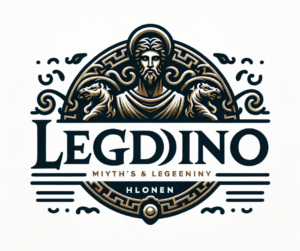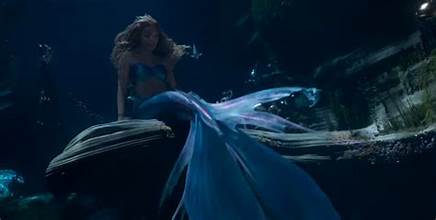
Hans Christian Andersen’s classic fairy tale The Little Mermaid is far more than just a charming children’s story about a mermaid who dreams of life on land. Beneath its surface lies a tapestry of deeper meanings and themes, spanning from the personal struggles of identity and self-sacrifice to more profound reflections on society, love, and spirituality. Over time, the tale has been adapted into numerous versions, including the popular Disney animated film, but its hidden layers remain as poignant today as they were when it was first written in 1837.
This article takes a deeper dive into the hidden meanings behind The Little Mermaid, unraveling the complex symbols and messages that make this story a timeless exploration of human nature.
1. Identity and Transformation
At the heart of The Little Mermaid lies a struggle for identity and transformation. The mermaid, who is unnamed in Andersen’s original tale, is a creature caught between two worlds: the ocean and the land. Her longing to become human reflects the universal desire to belong and to transform oneself in order to fit into a different society or achieve a dream. This theme of transformation goes beyond the physical. The mermaid’s desire to have legs, and her willingness to endure immense pain to achieve this, symbolizes the sacrifices one might make to fit in, even at the cost of their true self.
In many ways, the story reflects Andersen’s own feelings of alienation. Scholars have long speculated that the author, who led a somewhat lonely life, infused the mermaid’s unrequited love for the prince with his own feelings of longing for acceptance. The mermaid’s physical transformation into a human, but emotional detachment from her former life in the sea, mirrors the journey many people undergo when they change parts of themselves to be accepted in different environments—often at great personal cost.
2. Sacrifice and Loss
The mermaid’s sacrifice is a pivotal element of the story. In Andersen’s tale, she gives up her voice to the sea witch in exchange for legs, knowing that without her voice, she may never be able to express her love to the prince. This mirrors the sacrifices people make in pursuit of love, dreams, and ambition. The mermaid’s self-sacrifice is noble, but it ultimately leads to her undoing.
In many interpretations, this aspect of the story explores the idea that in seeking something greater, people often give up integral parts of themselves. The loss of her voice, a critical part of her identity, serves as a metaphor for the sacrifices women, in particular, have historically made to be accepted by male-dominated societies. The mermaid’s silence and her inability to communicate effectively with the prince can be seen as symbolic of women’s voices being suppressed or ignored.
3. Unrequited Love and Human Emotion
Another prominent theme in The Little Mermaid is unrequited love. The mermaid’s deep affection for the prince is pure, yet he remains oblivious to her feelings. Even when she is by his side, her inability to speak leaves her unable to convey her emotions, and she watches helplessly as he falls in love with another. The story’s tragic ending highlights the theme of love that cannot be fulfilled, a concept that resonates with readers who have experienced similar emotional struggles.
In many ways, the mermaid’s unrequited love represents the unattainable desires we often chase in life. The prince, unaware of the sacrifices she has made, mirrors how society often overlooks the struggles of individuals who go to great lengths to conform to expectations. In the end, the mermaid’s love remains unreciprocated, and she dissolves into sea foam—a powerful image of love’s fragility and impermanence.
4. Spirituality and Immortality
One of the lesser-discussed themes in The Little Mermaid is its exploration of spirituality and immortality. In the original tale, mermaids do not have immortal souls, and the mermaid knows that by becoming human, she could potentially gain an eternal soul if the prince marries her. However, if she fails, she will die and cease to exist. This brings a religious dimension to the story, one in which the mermaid’s quest for an immortal soul parallels a spiritual journey.
When the mermaid fails to win the prince’s love and faces death, she is given another option: she can become a “daughter of the air” and earn a soul through good deeds. This alternative ending introduces a Christian element, where salvation can be earned through virtue, even in the absence of romantic fulfillment. The mermaid’s final transformation into a spirit is a symbolic representation of transcendence, suggesting that there are rewards beyond earthly desires.
5. Feminist Interpretations and Critiques
Over the years, The Little Mermaid has been subject to many feminist interpretations. Some critics argue that the tale, particularly in its Disney adaptation, perpetuates harmful stereotypes about women sacrificing their identities for love. The idea that the mermaid gives up her voice, one of her most defining characteristics, in exchange for the chance to be with a man, has sparked debate about the underlying message this sends to young girls.
However, other interpretations view the mermaid’s journey as one of empowerment, as she actively chooses her fate and takes control of her destiny. Even though her choices lead to tragedy, she is depicted as a character who is willing to take risks for what she believes in. In this reading, The Little Mermaid becomes a tale of autonomy and agency, highlighting the complex choices women face in navigating love, identity, and society.
6. Environmental Symbolism
Another layer of meaning in The Little Mermaid can be found in its environmental symbolism. The ocean, in both Andersen’s story and its adaptations, serves as a powerful metaphor for the unknown and untamable forces of nature. The mermaid’s connection to the sea reflects a bond with the natural world, and her desire to leave it behind in favor of the human world raises questions about the impact of abandoning one’s roots.
In modern times, this can be interpreted as a metaphor for environmental concerns. The story subtly touches upon themes of ecological loss and the consequences of pursuing human progress at the expense of nature. The mermaid’s departure from the sea, coupled with her ultimate dissolution into foam, can be seen as a poignant reminder of the fragile balance between human advancement and environmental preservation.
Conclusion: A Timeless Tale of Human Struggle
The Little Mermaid endures not just as a beloved children’s story, but as a timeless exploration of complex human emotions and existential questions. Its themes of identity, sacrifice, love, spirituality, and environmental awareness resonate across generations and cultures. Andersen’s tale remains relevant because it reflects universal struggles—transforming oneself, facing the consequences of sacrifices, and seeking deeper meaning in life.
The hidden meanings within The Little Mermaid remind us that beneath even the most innocent stories lie rich, multi-layered narratives that speak to the heart of human experience. Whether we interpret it through a feminist, spiritual, or environmental lens, The Little Mermaid continues to offer insights into the human condition, making it a story that will undoubtedly continue to be explored and reimagined for years to come.



















